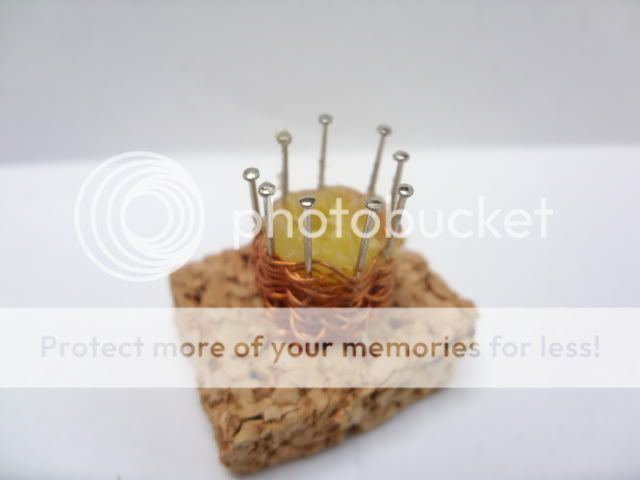1. Stick a line of pins in a suitable base that will hold them firmly, here bits of old cork board. Bases for Gabions can be made from slices of wine corks.
For the fence they are in a line but for the gabion I´ve used a small piece of circular wood as a template. (or draw a circle)
For the fence it doesn´t matter how many pins, the length wanted dictates that.
For the gabion it HAS to be an un-even number of pins, because later when "weaving" an even number means that instead of the wire giong alternatively in and out, it will always come in or out at the same place.

2. Thread can be used to do the "weaving" but here I´ve used copper wire. For a fence I cut it in lenghts but for a gabion, the longer the better. The thickness of the wire/thread, that´s up to you.

3. "weave" the wire into the fence or the Gabion always taking care to start alternatively to the front or back of the 1st pin and then to the back or front for the next .

4. The Gabion I fill, here with baby bell wax (yes I know I use it for everthing) to represent earth. Both Gabion and fence is then given a light smear of wood glue. The Gabion doesn´t really need glueing but the fence does.

5. Cut off the pin heads. It´s better to keep them on whilst "weaving" to avoid being scratched. Here I´ve cut them off at differing heights to give a more "natural" look. Base paint. I recommend (although I don´t like it myself due to the enviromental factor) if there´s a lot to base, Spray paint. Then paint for desired effect.

I find that the advantage of home made fences/bastions is that I can make the fences any length/height I want, also I can put curves into them or even gates. Also the Gabions can be made as "fat" or tall as I want.
Comments? Suggestions ?








 Moderator
Moderator

